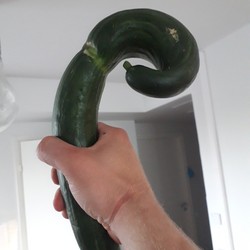I tried 3d print glue stick. washing with alcohol. wash the nozzle, cold pull, higher bed temperature… nothing,
the i has 3 successful prints with the same file, and now for the life of me I can’t get it to work
I had similar issues not too long ago and washing the plate with soap and warm water did the trick. .Made sure it dried for a day too just in case.
THIS!!! THIS IS WHAT WORKED
ANYONE IN THE FUTURE WITH THE SAME PROBLEM CHECK THAT
Heyoooo, glad I could help!
Why does this work?
Or, more precisely: Why does the dirty plate cause this balling-up?
Far as I know, it’s mostly due to the oils from your skin creating a layer on the build plate that, essentially, lube it up. So while the build plate can look clean, it most definitely isn’t. The cleaning of the plate is more so to remove the oils than anything else.
Ah, so the object slides a very little bit, causing printed filament to be in a spot where there should be none yet, which produces a tiny hill that might even slide another quarter a millimetre and gather even more filament on top of it, at which point the object to be printed touches the extruder?
Yes? But also like…the extruder is pooping onto a sheet of what is now ice, depositing it in a place it now refuses to stay. As it changes direction, the extruder can run into the loose filament, sticking it to the extruder, expanding upon the surface area of what is now hot metal and plastic for the extruded filament to stick to.
A few things I might consider/think to try:
- How old is the PLA you’re using? Is it possible it’s absorbed too much moisture?
- Are you printing too fast or possibly under-extruding?
- Skip the glue. I’ve found it’s just gunk that separates the filament from the print bed, worsening adhesion in my testing. Clean your print bed with rubbing alcohol before hand.
- How old is your nozzle? If you’ve been printing for a few hundreds of hours, the inner diameter of the nozzle might be worn out.
- How hot is your print bed? For PLA, I’ll usually keep mine around 60°C.
I don’t have a Bambu, but these are a few of the things I’ve learned with my Monoprice Maker Select v2 and Ankermake M5.
Skip the glue. I’ve found it’s just gunk that separates the filament from the print bed, worsening adhesion in my testing. Clean your print bed with rubbing alcohol before hand.
99% of printing issues with PLA are solved with a thin film of glue stick.
IPA does not remove oils, it solubilizes them and then they deposit back down again when it evaporates. Soap and water is better because it removes oils and plasticizers.
IPA does not remove oils, it solubilizes them and then they deposit back down again when it evaporates.
You don’t dump alcohol on the plate and then let it evaporate. You put it on a paper towel or microfiber cloth and rub the plate so the oils are transferred to the paper towel.
Dish soap can be problematic because many brands include oils to be soft on hands. Palmolive is named because it has Palm oil in it. Dawn has Palm oil too
(it was solved by washing the plate with soap)
The PLA is a week old, but it was 10$ no brand PLA which might be an issue.
there nozzle might be about a year old,
I’m using 60°, but tried 70°
thanks for your answer


